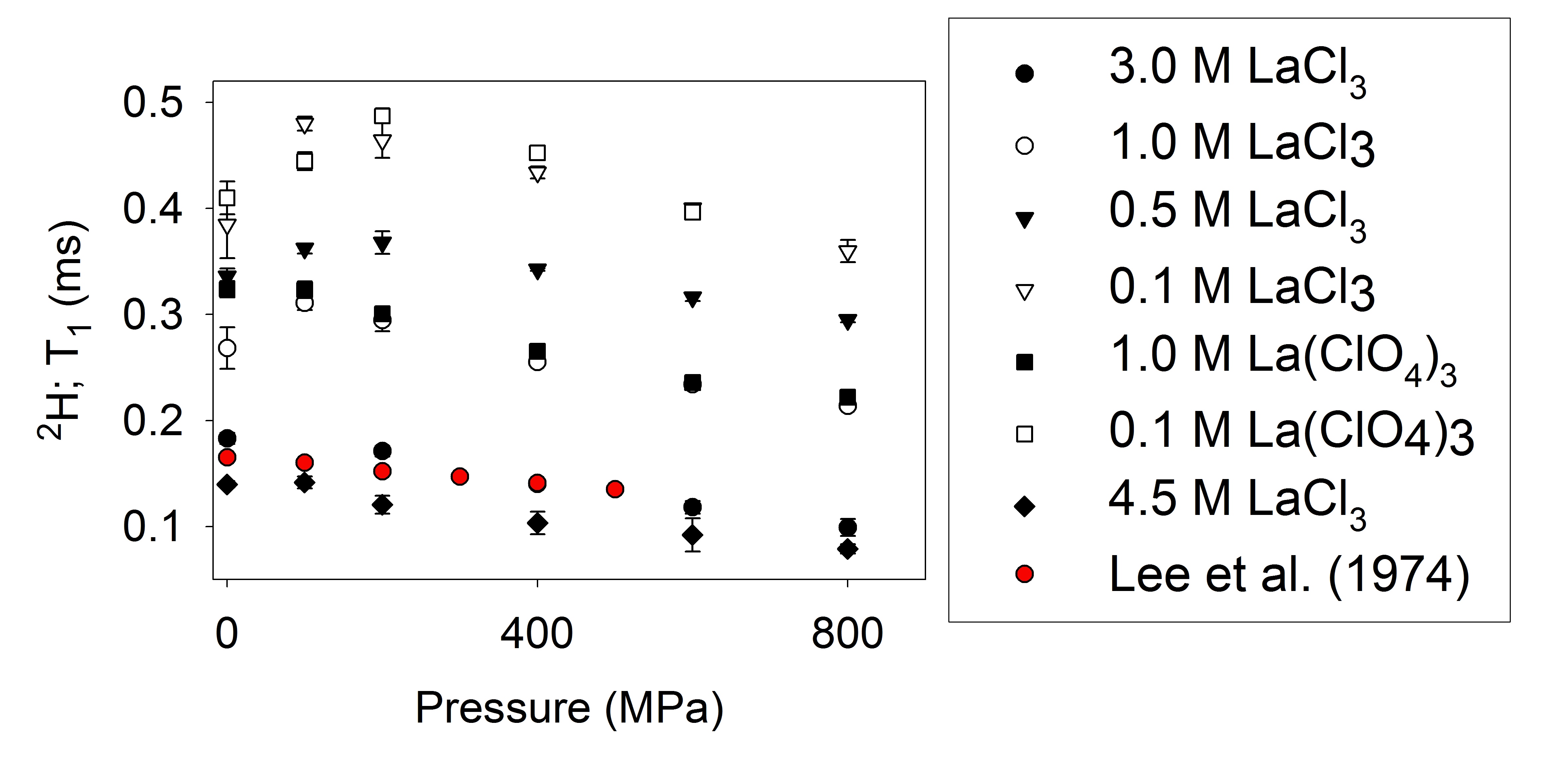Towards 2D NMR Spectroscopy on Aqueous Samples at 2 Gigapascals
- 1. University of California, Chemistry, Davis, United States
- 2. University of California, Earth and Planetary Sciences, Davis, United States
- 3. University of California, Physics, Davis, United States
- 4. University of California, NMR Facility, Davis, United States
Equilibrium constants for solution species that exist deep in the Earth's crust are of great importance to geochemists and chemists alike. Theoretical models for the speciation of aqueous solutions can make predictions over a wide range of temperature and pressures, but are largely untested at pressures greater than 0.5 GPa. Recently we demonstrated high-pressure NMR measurements on boron compounds[1]. A second-generation non-magnetic piston-cylinder pressure cell is presented here for solution-state NMR spectroscopy at geochemical pressures. 2H T1 measurements were performed from ambient pressure to 1.6 GPa and 139La T1 measurements were performed from ambient conditions to 0.8 GPa. The 2H T1 data were compared to previous measurements[2] to verify probe performance. The probe has been successfully tuned at 400 and 500 MHz using remote tuning techniques[3] and has provisions for double tuning 1H-X in order to perform heteronuclear 2-D NMR experiments. Future plans include the incorporation of gradients for DOSY measurements.

[1] Pautler, B. G.; Colla, C. A.; Johnson, R. L.; Klavins, P.; Harley, S. J.; Ohlin, C. A.; Sverjensky, D. A.; Walton, J. H.; Casey, W. H., A High-Pressure NMR Probe for Aqueous Geochemistry. Angewandte Chemie International Edition 2014, 53 (37), 9788-9791.
[2] Lee, Y. K.; Campbell, J. H.; Jonas, J., Effect of pressure on deuteron spin-lattice relaxation in several concentrated deuterium oxide diamagnetic electrolyte solutions. The Journal of Chemical Physics 1974, 60 (9), 3537-3543.
[3] Walton, J. H.; Conradi, M. S., Probe Tuning Adjustments - Need They Be in the Probe? J. Magn. Reson. 1989, 81, 623-627.
